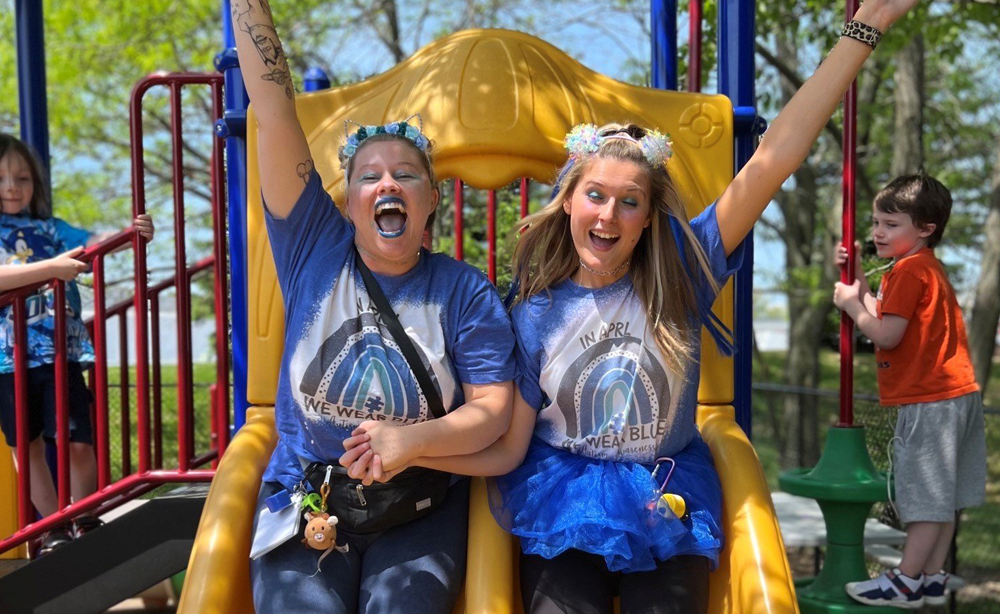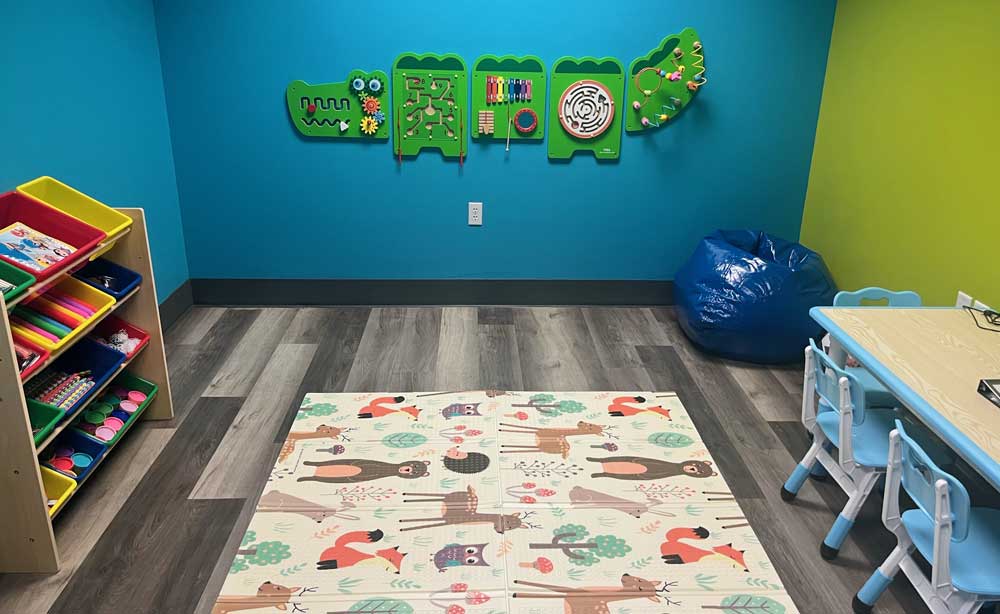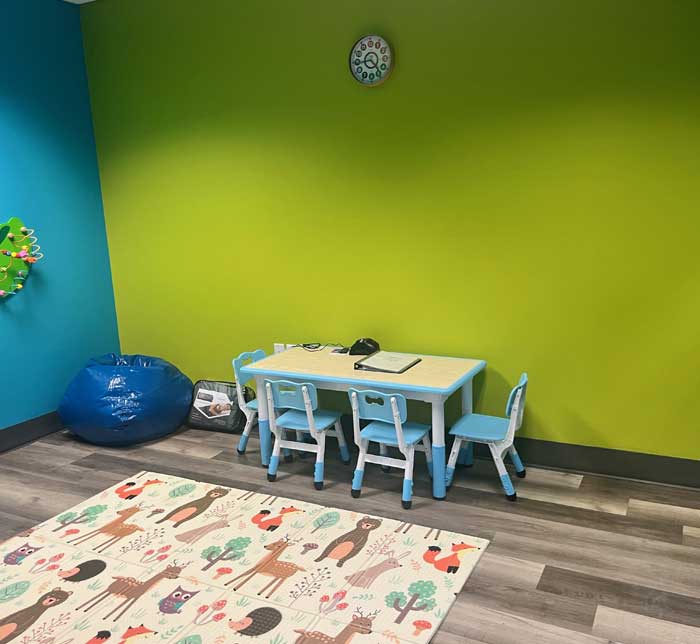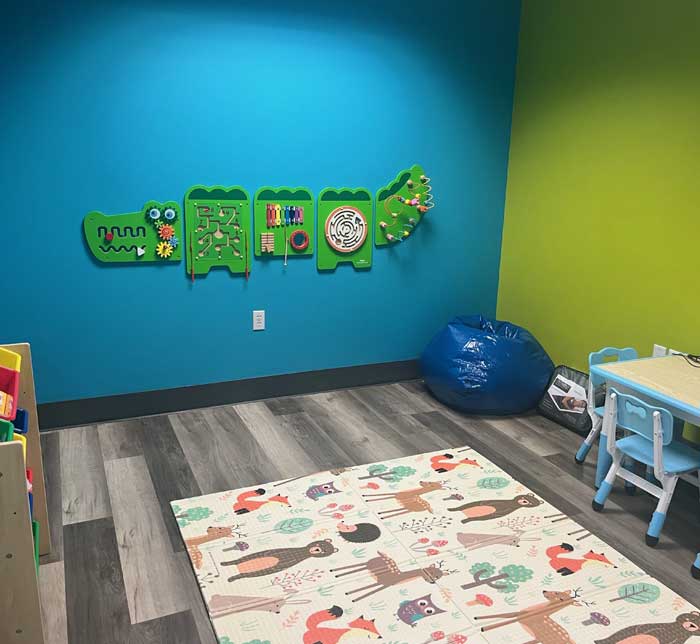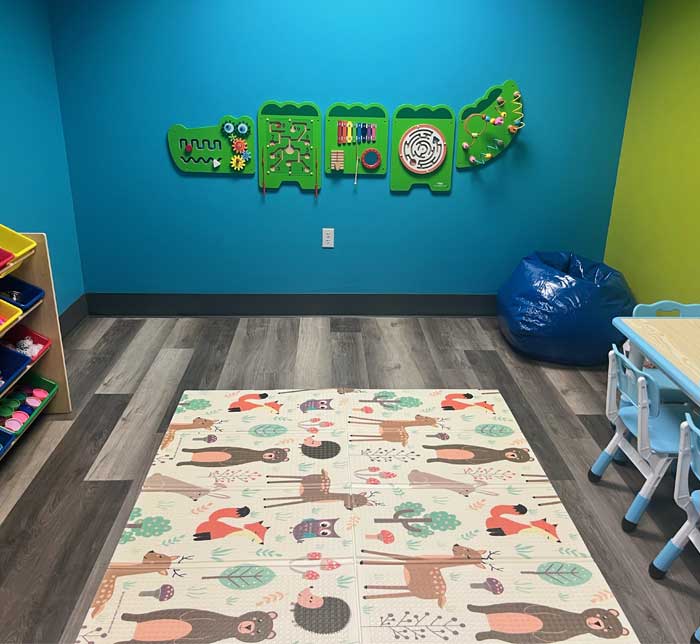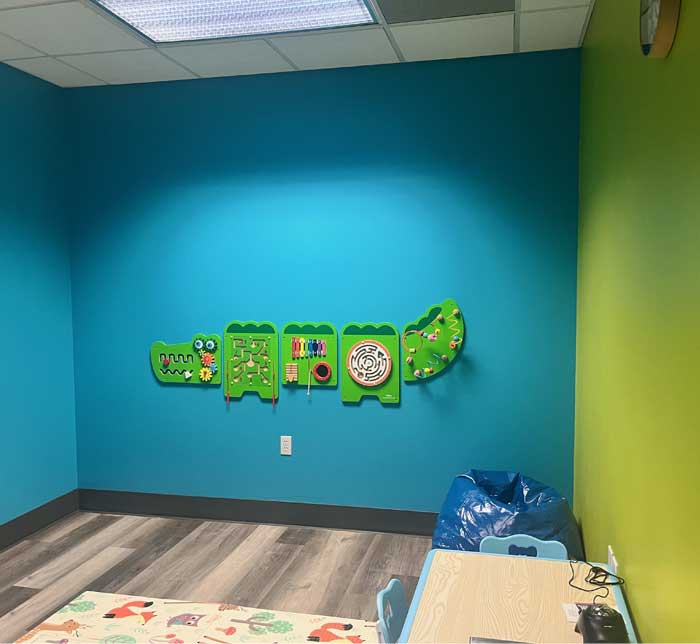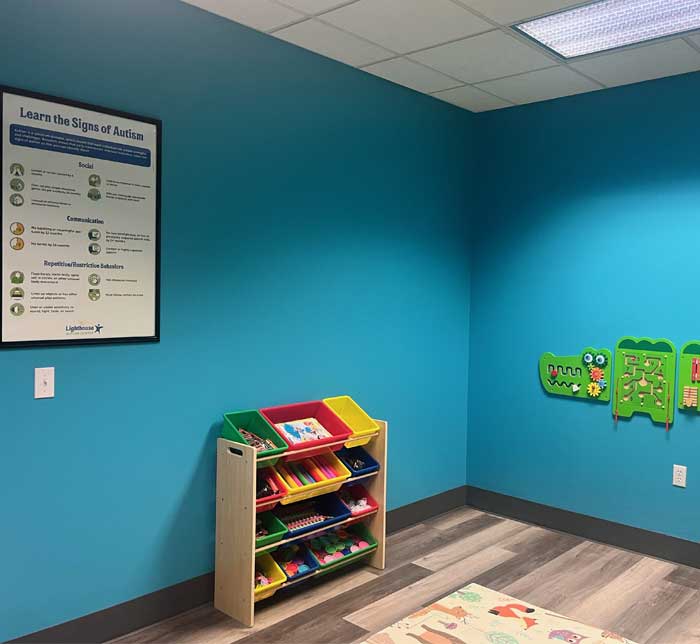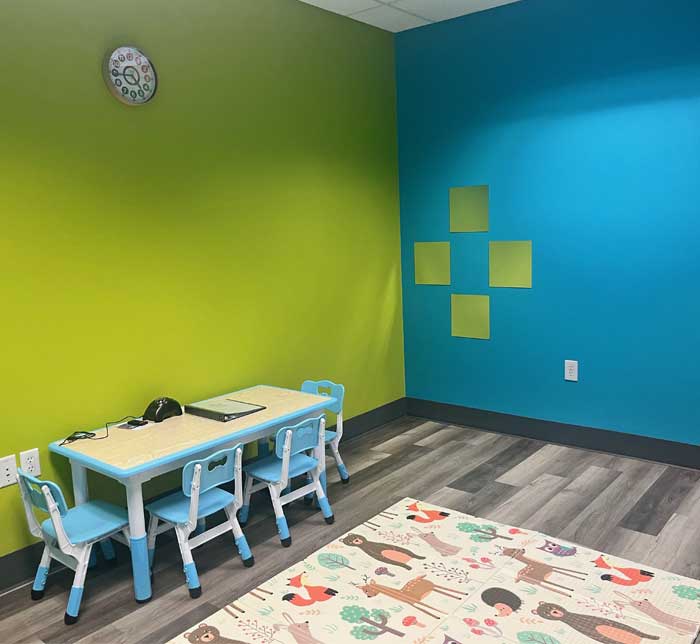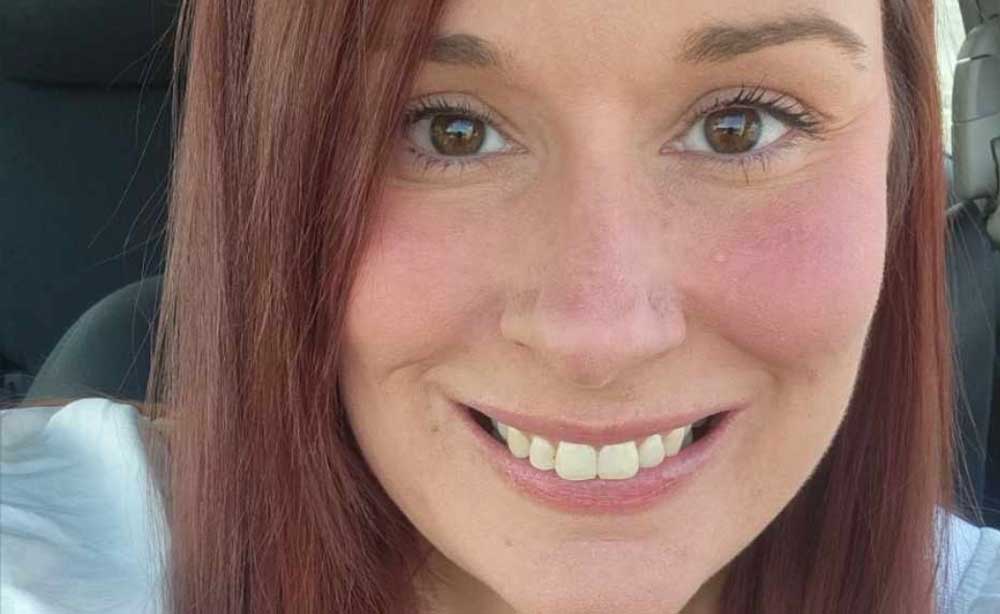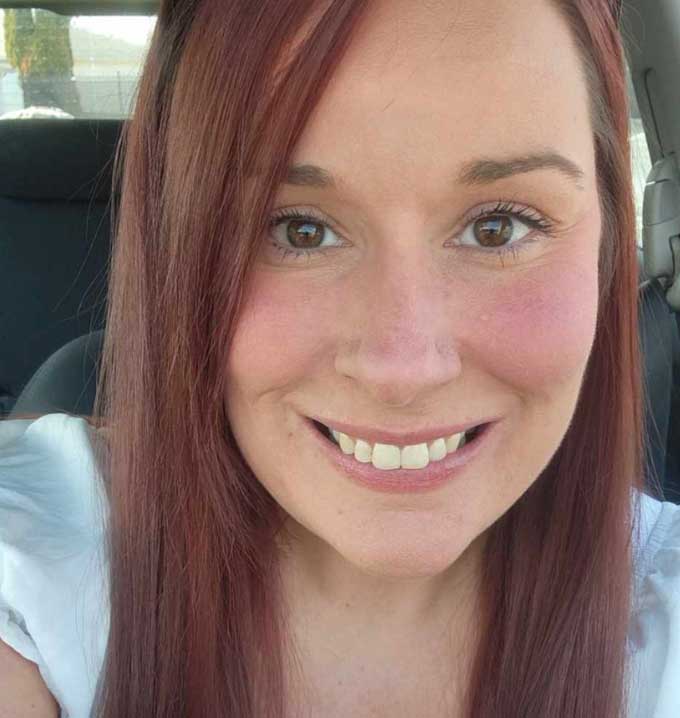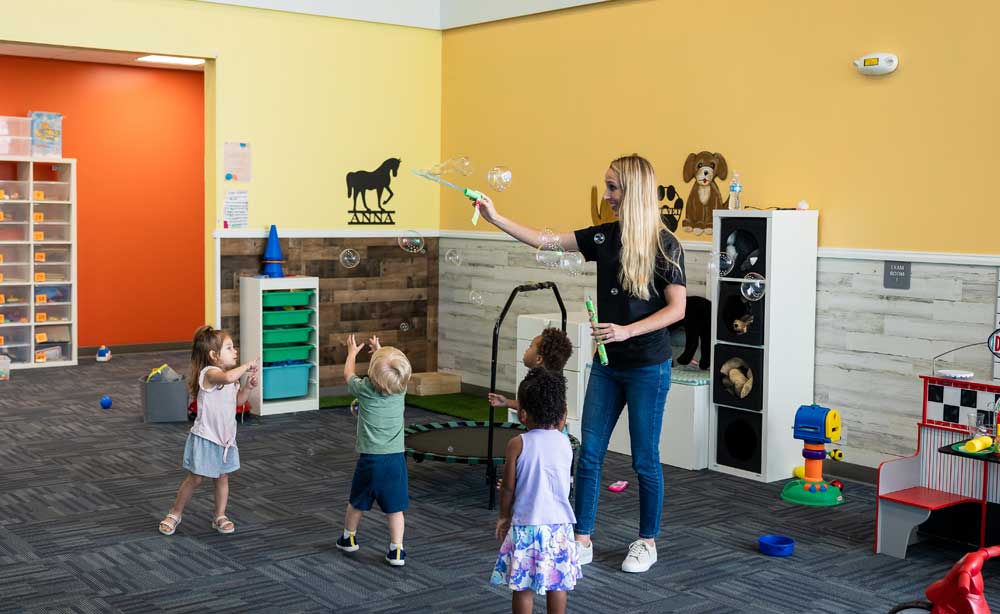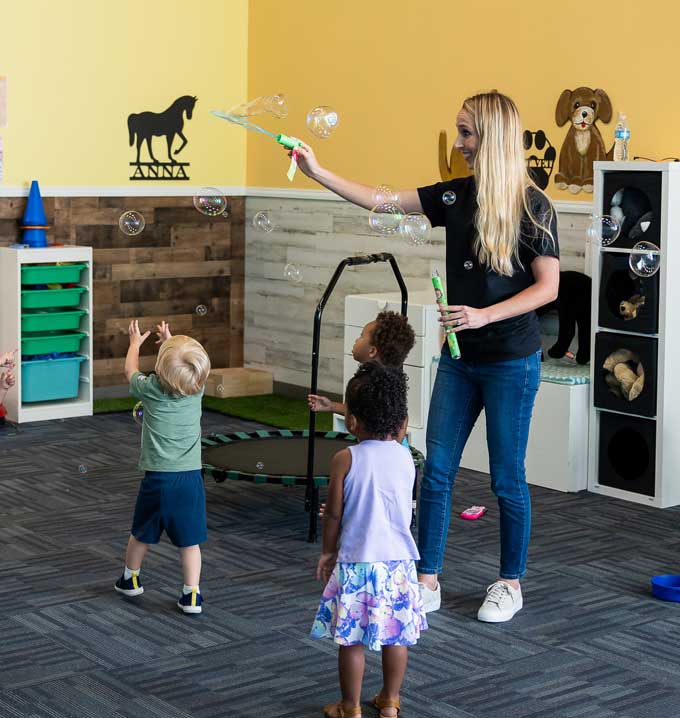April is Autism Awareness Month, so we’ll examine its history, how it was started, and how everyone in the community can contribute to raising awareness.
Autism Awareness Month
World Autism Day takes place each year on April 2nd, but because it’s such an important event for millions of families and individuals around the world, we, as a community, get the chance to dedicate the entire month of April to autism awareness. Sanctioned by the United Nations, this year will mark the 17th annual World Autism Awareness Day!
April is dedicated to fostering understanding, acceptance, and support for the autism community. This period serves as a critical platform for educating the public about autism spectrum disorders and advocating for the rights and opportunities of those affected. Through various initiatives and activities, Autism Awareness Month aims to transform the narrative around autism, while also addressing the challenges autistic individuals face daily. It’s a call to action for people to be more inclusive and supportive, creating a world where everyone, regardless of their place on the spectrum, can thrive.
Join us to learn more about this event, take a look at how to celebrate Autism Awareness Month, and explore ways to encourage autism acceptance.
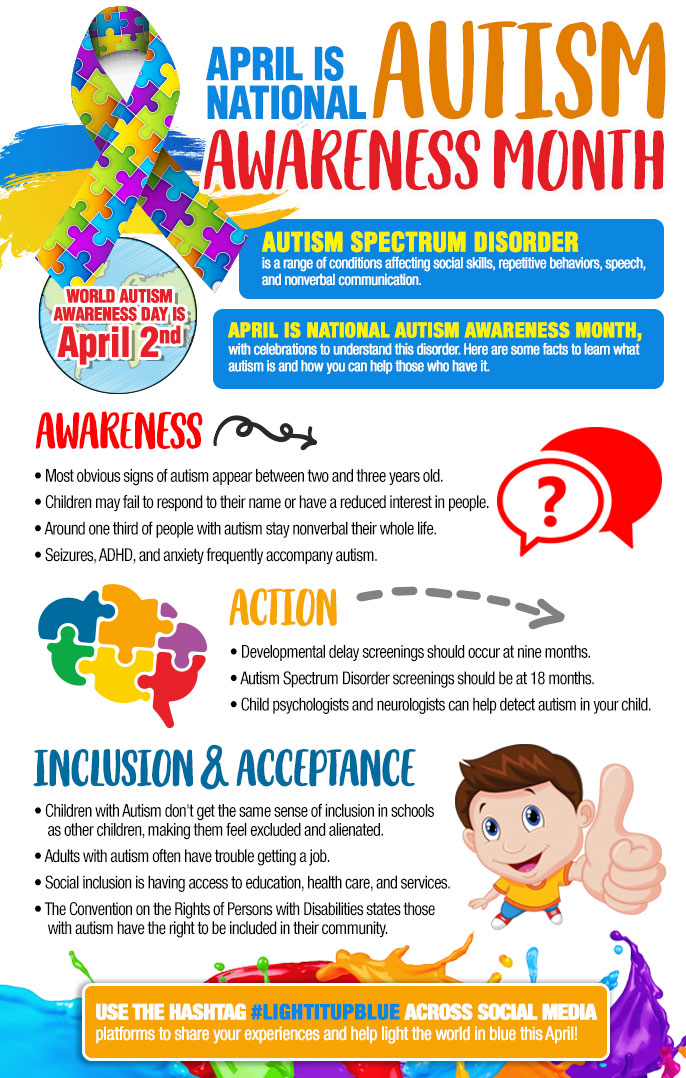
This infographic was given to Lighthouse by Andy Mohr Toyota. It shows the importance of Autism Awareness Month and how to #LightItUpBlue!
Understanding Autism Spectrum Disorder
Autism Spectrum Disorder (ASD) is defined by the Autism Society of America as “A complex developmental disability that typically appears during the first three years of life and affects a person’s ability to communicate and interact with others.”
The autism spectrum includes a range of conditions affecting social skills, behaviors, speech, and nonverbal communication. It is defined by a certain set of behaviors and is a “spectrum disorder” that affects individuals differently and to varying degrees. Common disorders found within the autism spectrum include:
- Autistic Disorder
- Rett syndrome
- Childhood disintegrative disorder (also known as Heller’s syndrome)
Signs and symptoms are usually noticeable in early childhood and emerge between 24 and 36 months of age. One of the most important autism tools for parents involves learning the early signs of autism in children and infants. It is important that you are familiar with the typical developmental milestones your child should be reaching as well.
Some of the most common signs of ASD in children are:
- Not responding to their name
- Avoiding eye contact
- Getting very upset if they do not like a certain taste, smell, or sound
- Repetitive movements and phrases
- One-sided conversations without needing a response
Of course, ASD is unique in every person, and no two autistic people will be the same.
Children with ASD also tend to excel at particular things and have above-average intelligence. Some things that they might excel at include music, academics, and visual skills. Roughly 40% of those diagnosed with autism have above-average intellectual abilities.
Inclusion and acceptance of autistic people are just as important as increasing understanding and awareness of Autism Spectrum Disorder.
Interesting facts about Autism Awareness Month
Prepare for Autism Awareness Month by reviewing the facts about this event.
- In 1972, the Autism Society launched the first annual National Autistic Children’s Week, but it wasn’t until 2007 that the United Nations General Assembly declared April 2nd the official Autism Awareness Day.
- Although Autism Awareness Day still officially falls on April 2nd, most countries recognize the entire month of April as Autism Awareness Month.
- If you’re wondering what the color for Autism Awareness Month is, it’s blue. It’s also the official color for the “Light It Up Blue” campaign. However, many people choose to wear other bright colors to help promote this month as well.
How to raise awareness about autism
April serves as an opportunity to promote the inclusion of autistic individuals in all aspects of society, including education, employment, and community involvement. By encouraging the understanding and acceptance of autism, we can work towards creating a more inclusive world for autistic people.
One way to support Autism Awareness Month is by participating in events and activities that promote understanding and acceptance. These can include fundraisers, walks, and educational workshops. Another way to show support is by patronizing businesses that employ autistic individuals or donating to organizations that provide resources and services for the autism community.
Autism Awareness Month also recognizes the important role of caregivers in the lives of autistic people. Caregivers face unique challenges and often go unrecognized for their unwavering dedication and love. This month is an opportunity to show appreciation for caregivers and the vital role they play in supporting individuals with autism.
In addition, Autism Awareness Month highlights the need for continued research into the causes and treatments of Autism Spectrum Disorder. By investing in research, we can improve our understanding of autism and work towards more effective interventions and support.
How to celebrate Autism Awareness Month and beyond
While it is important to have a month dedicated to raising awareness about autism, we don’t believe that autism acceptance should be limited to a single month — it’s something that should be practiced daily. If you would like to raise awareness about autism everyday, here are some actions you can take.
Educate yourself
True awareness begins with personal education. Delve into resources to gain a deeper understanding of autism and its impacts on individuals and families.
Attend local events
There are ongoing autism awareness events throughout the year. Show your support by attending these events, taking your friends and family, and even volunteering if you have the time.
Stand up for others
If you see an autistic person being bullied or hear someone talking negatively about them, it’s time to stand up and let them know that it’s not okay. Taking a stand makes a significant difference in fostering a respectful and inclusive society.
Set a positive example
Through your actions, demonstrate that all individuals, autistic or allistic (non-autistic), deserve equal respect and kindness. Being a positive influence encourages others to follow suit, creating a ripple effect of acceptance and support.
Methods of inclusion and acceptance
One of the biggest issues that people with ASD face is the feeling that they are not included and accepted. This could be for children in school or an adult at work.
If you’re allistic, it’s easy to help autistic people feel more included. Keep an open mind and an open heart when interacting with autistic people. Invite them into your circles and to events (even if you know they will decline), and encourage other allistic people to treat autistic people with respect and understanding.
You can also become more involved by calling or writing to local legislators, state representatives, and other leaders about proposed legislation that could impact autistic people. Be aware of how new policies affect access to things like services, research, insurance, and more. Speak up and encourage others to do the same.
FAQs
Let’s recap by taking a look at some of the most fundamental principles of Autism Awareness Month.
When is Autism Awareness Month?
April is Autism Awareness Month and serves as a global opportunity to expand understanding and acceptance of ASD. However, actively raising awareness and continuing to support people with ASD every day of the year is important to do your part in creating a more inclusive and supportive society for all people.
Why is autism awareness important?
Understanding ASD breaks down the barriers of ignorance and misconception, allowing autistic individuals to thrive in environments that acknowledge and respect their unique challenges and strengths. Awareness fosters empathy, encouraging communities to adapt and create supportive structures, such as inclusive education programs and workplace accommodations, which empower autistic individuals to live fulfilling lives.
What are the autism awareness colors?
Blue is the official color of autism awareness. Even so, during the month of April, wearing bright, bold colors in celebration and support of autism is widely accepted and encouraged!
Celebrate diversity with Lighthouse Autism Center
Contact us at Lighthouse Autism Center for more information about Autism Awareness Month. We offer a range of autism resources and information about our unique Lighthouse Fusion ABA therapy program that you can access online.


